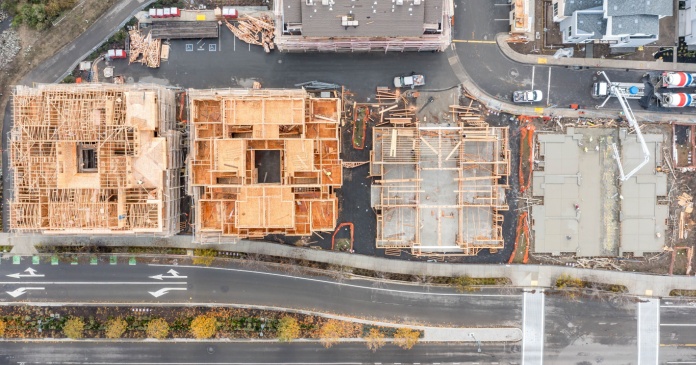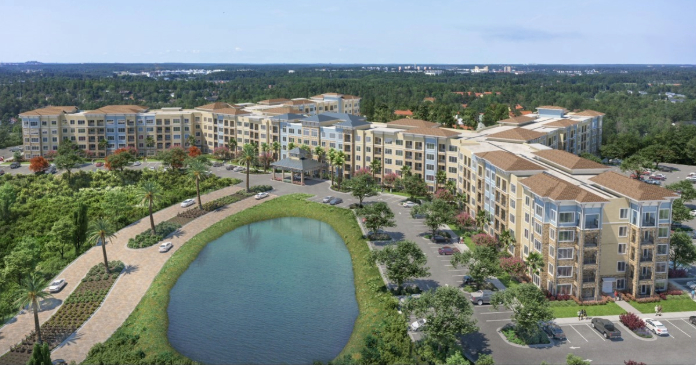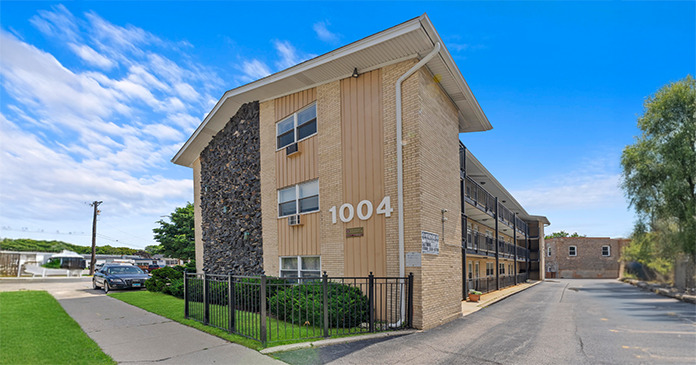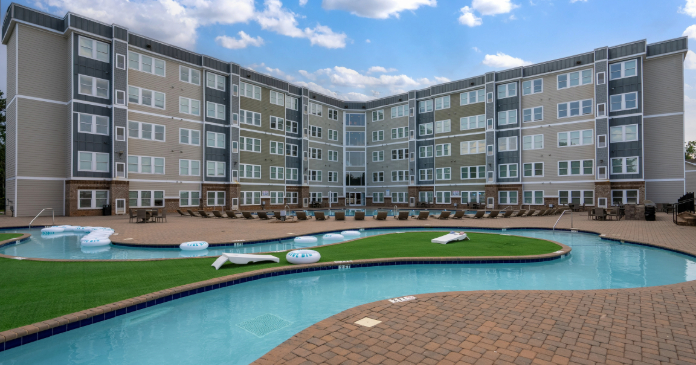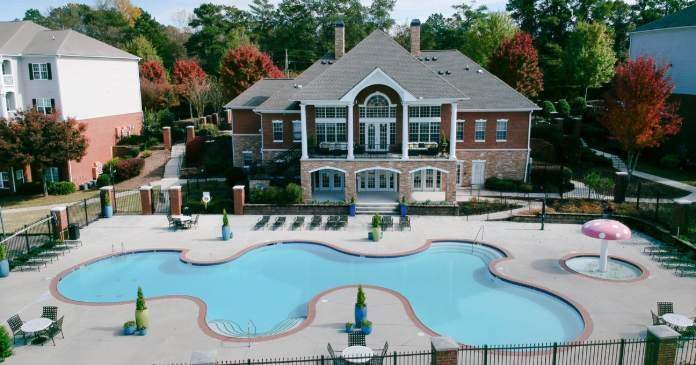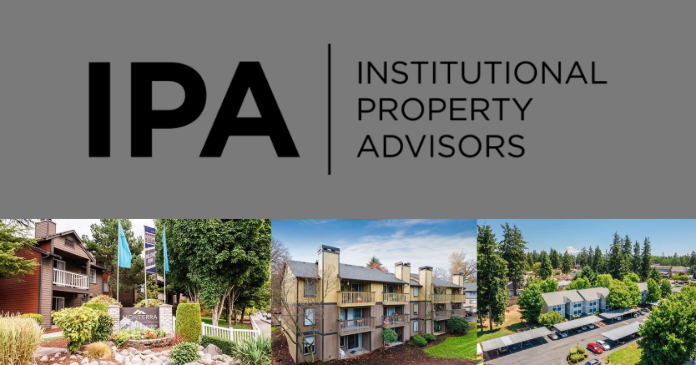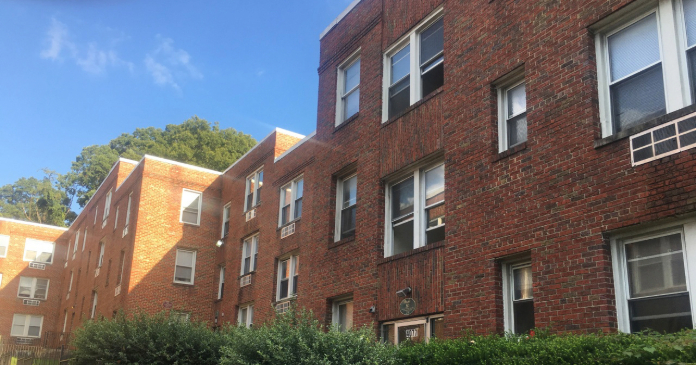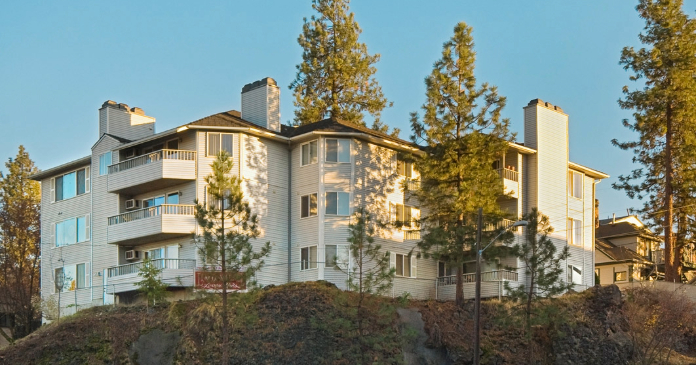And, they’re expecting equally satisfying results from communities underway and in their pipelines.
Equity Residential
“There is absolutely no doubt that we continue to enjoy very strong apartment demand across our core markets,” said Equity Residential CEO David Neithercut in his introduction to the company’s Q1 earnings call at the end of April. That demand is being driven partly by a modestly improving economy that produced about a million new jobs in the preceding four months and 3.3 million last year.
“The creation of new households by the Millennial generation is generating significant new demand for rental housing, which is not being met by new supply today,” said Neithercut while noting that the company experienced less turnover, better occupancy and higher rental rates than originally expected in Q1.
The terrific fundamentals inspired the confidence to extend renewal offers that achieved 6.3 percent growth for the quarter, the highest since Q1 2012, while the percentage of residents that chose to renew their leases was the highest since Q1 2008. Turnover fell to 11.2 percent from 11.3 percent the prior quarter, with the percentage of move outs to home purchase dipping to 11.9 percent, the lowest percentage the company has seen since Q1 2012.
The REIT currently has 14 wholly owned projects composed of 5,004 units under construction, all but one of which are located on the West Coast from Seattle to Los Angeles. That one is the 236-unit, $110 million 170 Amsterdam in New York City that is scheduled for completion in Q2.
Also in New York City, Equity Residential partnered with Toll Brothers City Living to build the 350-unit Prism at Park Avenue South that is scheduled for completion this summer. Toll Brothers’ portion of the development cost was $115.1 million for the construction of 81 condos on the 23rd to 40th floors in the for-sale portion of the high-rise. Equity Residential contributed $252 million of the total cost to develop the angularly shaped building and will own the 269-unit rental portion on the lower 20 floors.
In Q1, the REIT started construction on just one new project, the 449-unit 801 Brannan, which is the last of four downtown San Francisco sites acquired as part of the acquisition of Archstone a couple of years ago with AvalonBay Communities, Inc.
Equity Residential expects a yield on today’s rents in the mid-5 percent range for the community that will cost around $290 million to build and is scheduled for completion in Q3 2017.
On the rehab front, Equity Residential CFO Mark Parrell said during the earnings call that he expects the REIT will spend between $30 million and $60 million a year on kitchen and bath rehabs, “just to help us stay current in the market.”
Neithercut said the company plans to continue to do major rehabs on properties considered medium to long-term holds. “On assets that we think would be shorter term holds that might benefit from such a capital expenditure, we might often sell that asset, not unlike the three that we sold in the first quarter to a value-add player, rather than trying to do it ourselves and then sell it after the fact,” he said.
Of the $144 million of land for development the company owns, a couple of sites in Washington, D.C. are ready to go, but have been on ice in what is the most troubled market in the REIT’s portfolio. The other holdings aren’t shovel-ready yet, but when they are, construction will start.
UDR, Inc.
The 332-unit, $132 million Del Ray Tower that UDR completed in the nation’s capital in Q4 of last year remains challenged by the weak D.C. market. The REIT is currently offering concessions of about two months at the property that was 69.9 percent leased and 65.4 percent occupied as of March 31. “But, we’re confident in its long-term prospects,” said UDR SVP and COO Jerry Davis during the REIT’s Q1 earnings call.
In fact, compared to his original plan, D.C. is one of his most positive upside surprises, along with Baltimore. “Last quarter we stated that we felt we had bottomed in fourth quarter of 2014 in D.C. and then it was either going to plateau or start to reaccelerate. The acceleration was a little bit sooner than we expected, although we did expect it to go positive,” he said. Davis also noted that, as of the end of March, new supply inside the Beltway was providing less resistance than a year ago.
Davis recalled saying a year ago that the company’s worst performing individual assets were in D.C., where the rock-bottom performer was the 185-unit View 14 on U Street. “If I look at my first quarter results this year, that same property has positive revenue growth of 3.5 percent. So, that U Street corridor, where we’ve bet pretty heavily with about four properties within a mile of there, is really performing well.”
He also is extremely pleased with the first three months of leasing at the REIT’s 369-unit, $218 million 100 Pier 4 development in Boston’s Seaport District that started in Q4 2012 and is scheduled for completion in Q2 of this year.
“We’ve taken over 120 applications in the months of March and April, well above our expectations,” he said. At quarter end, the property was 31 percent leased and, as of the April 28 earnings call, was 50 percent leased and 17 percent occupied. Asking rents of $470 were ahead of original underwriting, according to Davis.
100 Pier 4’s waterfront location, which is a five-minute walk from Boston’s downtown financial district and the city’s South Station Train hub, is surrounded by new office building construction. Several major employers are relocating to the Seaport district, including Goodwin Proctor, which is relocating its Boston headquarters in 2016 and taking 380,000 sq. ft. in Seaport. State Street Bank, which is relocating from the Back Bay, is taking 485,000 sq. ft. and PWC is planning to take over 334,000 sq. ft. there.
“We’ve experienced exceptional leasing demand ahead of these transformational events and are excited as the area continues to attract new potential residents,” Davis said.
In Q1, the company started on the 155-unit, $99 million Domain Mountain View in Mountain View, Calif., a 50-50 joint venture with MetLife. UDR continues to underwrite development opportunities with a bi-coastal focus and anticipates the size of the company’s development pipeline to be in the range of $900 million to $1.4 billion by mid-year, said CEO Tom Toomey in his earnings call introduction.
In the renovations department, the REIT is in the midst of underwriting one in Fairfax County, Va., where Davis hopes to start on some value-add work later this year. He is also looking at some more modest renovation opportunities inside the D.C. Beltway.
Subsequent to quarter end, UDR entered into a joint venture agreement with the Wolff Company on a portfolio of five communities that are currently under construction. The venture will provide UDR with a pipeline of more than 1,500 new homes with an accelerated delivery schedule and anticipated completions beginning this year and ending in 2017, Toomey said.
Camden Property Trust
During Q1, Camden Property Trust continued its capital recycling program, selling the 20-year-old, 284-unit Camden Ridgecrest in Austin, Texas, for $29.3 million and the 27-year-old, 832-unit Camden Bayside in Tampa, Fla., for $85.1 million. The REIT also started construction on the $115 million, 405-unit Camden NoMa II in Washington, D.C. that is scheduled for completion in Q4 2017.
“We will continue to recycle capital, taking advantage of the robust demand and attractive pricing for our properties,” CEO Ric Campo said in his introduction to the company’s Q1 earnings call. “Our development program continues to add value to our cash flow and to our net asset value,” he said.
During the quarter, the company completed construction at the 300-unit, $35.6 million Camden La Frontera and the 314-unit, $46.5 million Camden Lamar Heights, both of which are located in the Austin, Texas area.
The apartment REIT currently has 11 wholly-owned communities underway with a total of 3,740 units with a projected cost of $972 million in markets from California to Washington, D.C.
Property revenues from Camden’s consolidated non-same store and development communities exceeded the company’s forecast by $500,000 in Q1. This resulted from better than expected occupancy at the 1,005-unit Camden Miramar student housing community in Corpus Christi, Texas, and accelerated leasing at the REIT’s development communities. The 261-unit Camden Boca Raton and Camden La Frontera were 95 percent and 96 percent leased, respectively, as of March 31, both ahead of schedule, reported Camden CFO Alexander Jessett.
Camden expects to start the 457-unit, $116 million Camden Shady Grove in Rockville, Md., this year, but is taking the slow road on contracting the labor for the 315-unit, $90 million McGowen Station in Houston, Texas. There, Campo expects to begin going vertical in the fall because he believes construction costs, which soared when the oil boom snatched up much of the labor force in the Lone Star State, are on the way down. “Hopefully, we’ll be in a situation where we can get some favorable pricing later in the fall and towards the end of the year, but I do think construction prices are going to come down here,” said the CEO of the Houston-based REIT.
Office construction also has contractors busy now, with 17 million sq. ft. of construction underway, 4.5 million sq. ft. of which is Exxon’s new facility that is almost finished in North Houston. But, Campo said, “There very likely won’t be a lot of speculative construction going forward.”
“So, what’s happening is the construction workers that are working on those jobs and the construction contractors are looking on the horizon and going, ‘Where is my pipeline?’ And the pipeline is going to shrink pretty dramatically. I think the same thing is going to happen with multifamily here in Houston,” he said.
Developers who don’t have their Houston projects financed today, he said, are highly unlikely to obtain financing for them. He predicted that there will be at least a 50 percent decline in the development pipeline in 2016 and 2017 compared to what’s coming online this year and next, causing downward pressure on construction costs.
Land prices in Houston have come down a bit from their high, but only from “white hot to hot,” Campo said, answering an analyst’s question about whether Camden plans to add to its land holdings. If people were selling land at a big discount, the REIT might look at it, but he hasn’t seen any bargains or anybody in trouble, he said.
The REIT probably will start the 336-unit, $80 million Camden Buckhead in Atlanta next year and the 286-unit, $62 million Camden Atlantic in Plantation, Fla., next year or the year after. The Houston property that is in the pipeline—the 519-unit, $170 million Camden Conte—could start in 2016 or 2017, “depending on how we feel about Houston,” Campo said.
AvalonBay Communities, Inc.
AvalonBay Communities, Inc., has more communities under development right now than any other apartment REIT. The company is underway on 25 communities with a unit count of 7,623 located on the East and West Coasts.
In Q1, the development giant completed three assets, including the 710-unit, $272 million Avalon West Chelsea/AVA Highline in New York City. The community is a combination of the Avalon brand that features upscale living and high-end amenities and the AVA brand, where units are smaller and designed to attract Millennials who are looking for housing in urban centers.
The REIT also completed the 367-unit, $67.8 million Avalon Alderwood I in Lynwood, Wash., and the 280-unit, $112.4 million Avalon Little Tokyo in Los Angeles, Calif.
AvalonBay started two of the properties on the under-construction list in Q1, totaling about $100 million—the 124-unit, $26.1 million second phase of the Avalon Alderwood community and the 332-unit, $74 million Avalon Hunt Valley in Hunt Valley, Md.
The first phase of the Alderwood deal was completed at a yield of around 7 percent and, even in suburban Seattle, that’s probably a mid-four percent cap, said AvalonBay Chief Investment Officer Matthew Birenbaum during the company’s Q1 earnings call at the end of April. “So that’s incredibly compelling value creation, second-phase incremental economics. We just phased that deal, phased the land take-down, which was great,” he said.
“The other one we started this quarter, Hunt Valley, that’s a bit of a unique asset for us,” he continued. The site is a transit-oriented suburban location at the end of the rail line, right next to a Wegmans Food Market. It is an old mall that has been turned into a town center in a submarket that has seen no new supply for some 30 years.
“So, in some ways it’s a lot like our kind of older Northeastern stuff, where we’re bringing a luxury product to a submarket that has very high home ownership cost and very high-end homes, estates and such, up in that area, as well as a decent amount of employment and a lot of other amenities, but just hasn’t seen luxury rentals,” said Birenbaum. “So, we think we’re actually creating a bit of a market there and we don’t get that opportunity very often,” he said, adding that the Hunt Valley deal increases the REIT’s exposure a bit to the Baltimore metropolitan area, which has done quite well this cycle and where AvalonBay is probably a bit under-allocated long-term.
Looking out over the development pipeline going forward, what’s currently under construction is about 50 percent urban versus what’s in the pipeline, which is probably about 25 percent urban, he said.
Also in the first quarter, the REIT bought the American Bible Society’s headquarters property in New York City for $300 million early in February. According to AvalonBay SVP of Development Martin Piazzola, this is “one of those sites that just don’t come along very often.” The company plans to demolish the existing building and build a luxury residential tower that could total more than 300,000 sq. ft., above 55,000 to 60,000 sq. ft. of retail.
“We were aggressive about getting shovels in the ground early in this cycle and all of these development communities have a tremendous base and current cap rates and current costs,” said Birenbaum.
Chief Financial Officer Kevin O’Shea said the company’s development activity remains well funded. “In fact, as of quarter end, our development underway of $3.6 billion was completely match-funded by the $2.5 billion in capital spent to date, plus over $1.1 billion from cash on hand, projected free cash flow and our equity forward,” he said. As a result, funding risk for that investment activity is essentially eliminated, while the opportunity to realize a substantial amount of value creation, as the communities are stabilized, has been locked in.
“This cycle continues to offer compelling value creation opportunities for a development-focused apartment REIT such as AvalonBay,” said O’Shea.






